This post may contain affiliate links. Please read our disclosure policy.
This braised Napa cabbage is soft, sweet, and full of savory flavor — the kind of simple comfort dish that goes with everything. It’s inspired by the Hong Kong–style way of braising cabbage in wedges so the stems turn tender while the leaves soak up all that rich, smoky sauce.
I use Canadian bacon to build a flavorful base, then finish the sauce with butter and sesame oil for a silky, balanced finish. The cabbage stays juicy and slightly brothy — a cozy dish that’s perfect for weeknights as well as the holidays or family gatherings.
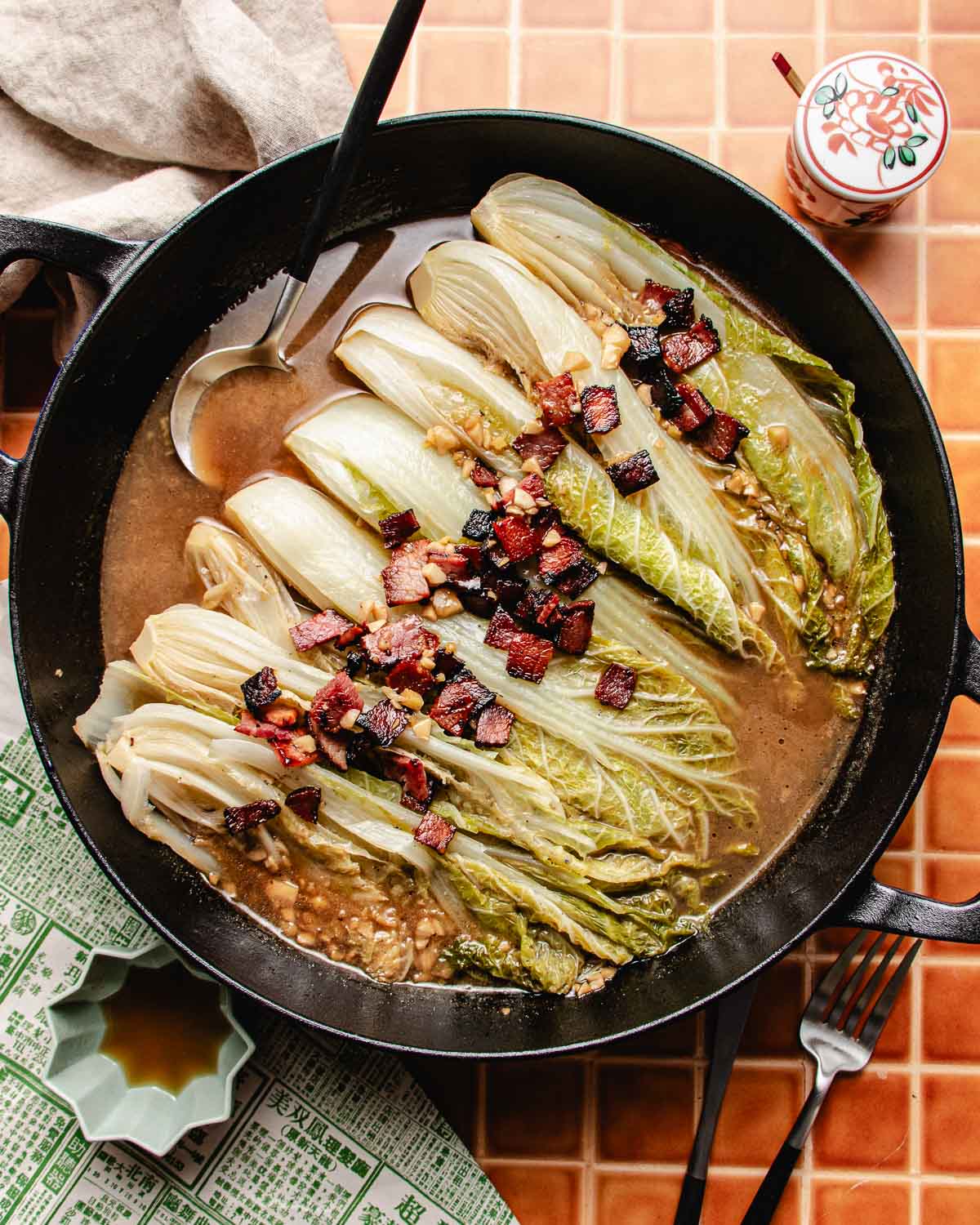
Main Ingredient Notes
- Napa cabbage – The star here. I like using smaller heads (about 8–9 inches tall) because they’re sweeter, cook evenly, and fit better in the braiser. Since we braise the cabbage in wedges — a traditional Hong Kong–style way — it’s important the pieces sit snugly in a single layer so they cook evenly without falling apart.
- For flavor – Canadian bacon, butter, and toasted sesame oil work together to build a rich, savory base. The bacon adds smoky umami, while butter gives the sauce a silky body, and sesame oil adds warmth and aroma at the end.
- Braising sauce seasonings – A mix of chicken stock, light soy sauce, and Shaoxing wine forms the base of the braising liquid. Use regular (not low-sodium) stock so the flavor doesn’t fall flat. Finish with a small starch slurry to thicken the sauce just enough to coat the cabbage
Tips for Making the Best Braised Napa Cabbage
Napa cabbage is naturally softer and sweeter than green or savoy cabbage. No matter how you cook it, it won’t have a firm or crunchy bite — and that’s part of its charm. When braised, the stems turn tender and release a subtle umami sweetness. To keep them from turning mushy, focus on three things: don’t slice too thin (size matters), braise just until tender, and maintain gentle heat.
How to keep the cabbage tender but not mushy
Napa cooks fast — much faster than regular green cabbage. Once the wedges go into the pan, you’ll notice the outer leaves start to turn translucent and the edges collapse slightly. That’s your sign it’s softening. The cabbage should bend easily when you press it with tongs, but still hold its wedge shape. If it’s starting to fall apart or the leaves separate completely, it’s gone too far. Keep the heat gentle and check around the 8–10 minute mark — that’s when Napa usually turns perfectly tender and naturally sweet.
Why this dish won’t taste bland
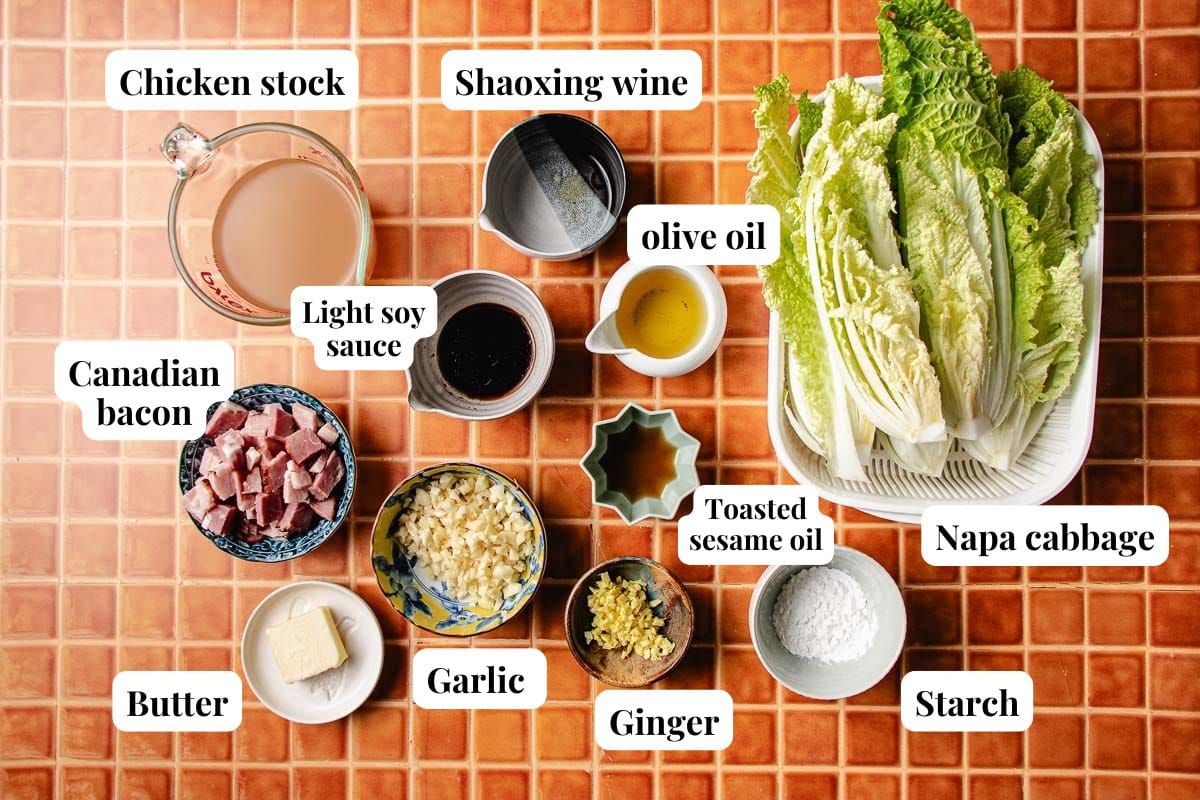
A lot of cabbage dishes fall flat because there’s not enough fat or layering in the flavor base. Here, we start by rendering the bacon to release its smoky fat — that’s what gives the sauce body and depth right from the start. Garlic, ginger, soy sauce, and a splash of Shaoxing wine build on that foundation. Then at the end, I swirl in a little butter. The butter balances the saltiness and rounds out the flavor so the sauce feels rich and smooth instead of oily or thin.
How to handle all that liquid Napa releases
Napa cabbage naturally holds more water than green or savoy cabbage, so it’s normal for this dish to have more liquid in the pan. Don’t drain it — that sweet juice is what makes the sauce so flavorful. Let it braise in its own juices, then simmer the liquid down a bit before thickening.
Avoiding uneven cooking
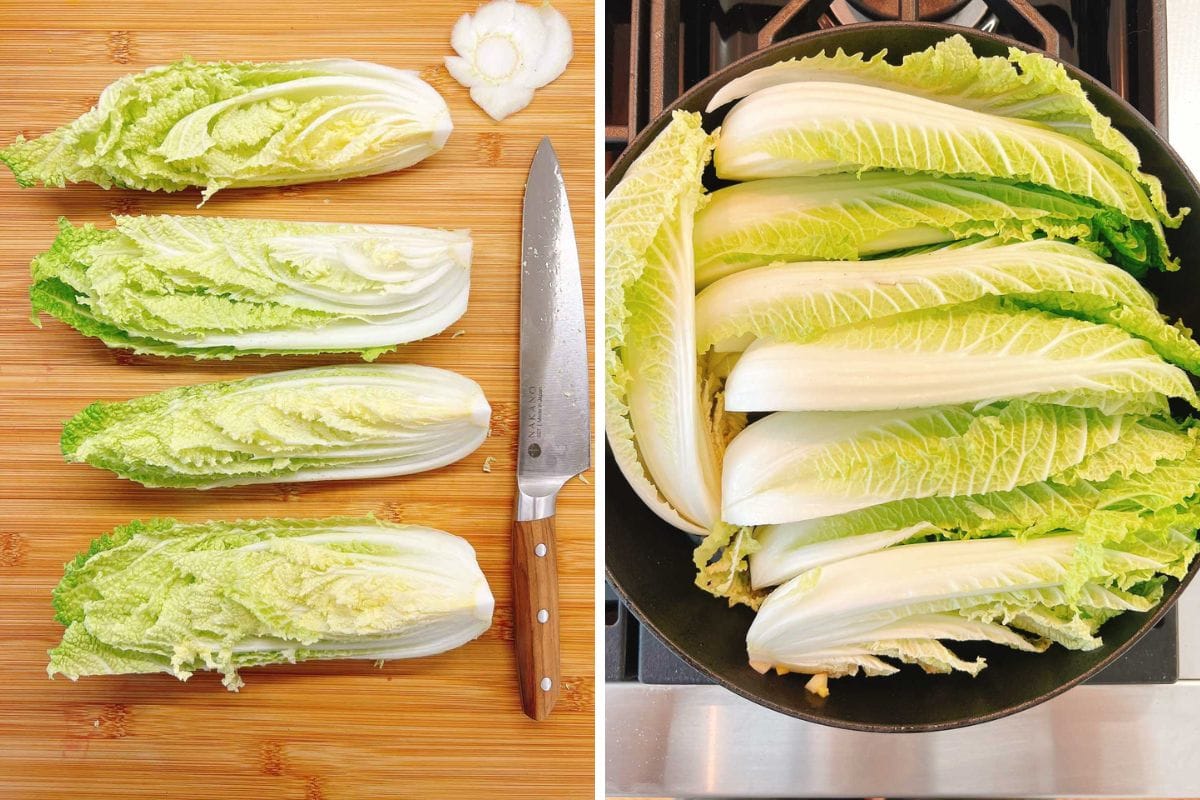
When the cabbage wedges are different sizes, the thinner parts overcook while the thicker stems stay crunchy. I now slice the heads evenly (4–6 wedges depending on size) and place them in a single, tight layer in the braiser. Smaller heads fit better and cook evenly.
Watch the stovetop temperature
Napa is more delicate than other types of cabbage, so it cooks fast. Keep the heat gentle and the braise at a steady simmer — not a rolling boil. You can always lift the lid to check on it and see how it’s doing. I like to peek a few times toward the end to gauge exactly how tender I want the cabbage. It’s easier to control the texture this way.
What to serve with braised cabbage
This braised Chinese cabbage is cozy, flavorful, and goes with just about everything.
- For seafood, try it alongside Baked Trout with Miso Butter, Orange Glazed Salmon, or Salt and Pepper Shrimp.
- If you’re serving poultry or beef, it makes a great side to Miso Ginger Braised Short Ribs, Roasted Cornish Hens, or Honey Garlic Chicken Thighs.
- For noodles, pair it with Garlic Chili Noodles, Taiwanese Dan Dan Noodles, or Mongolian Ground Beef Noodles for a meal that’s comforting, satisfying, and full of flavor.
FAQs
You can, but it’ll need much longer cooking time and won’t have the same natural sweetness or tender texture. Green cabbage is denser and less juicy, so it works better if you slice it thinner instead of cutting it into wedges. This recipe is meant specifically for Napa cabbage, which cooks faster and stays sweet and juicy when braised.
Try these napa cabbage recipes next!
If you love this braised version, here are a few more easy ways to enjoy Napa cabbage — each one brings out its natural sweetness in a different way.
Try my Sautéed Napa Cabbage, Napa Cabbage Soup, or Napa Cabbage Slaw for simple, delicious sides you can make any night of the week.
Braised napa cabbage recipe
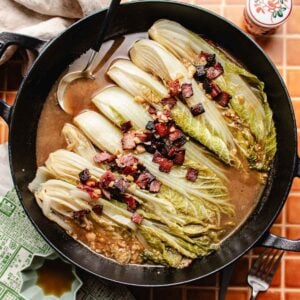
Ingredients
- 4-5 oz Canadian bacon 4-5 round slices
- 1.5 oz garlic cloves 5 large, minced,
- 0.3 oz ginger minced (2 tsp)
- 1.75 lb Napa cabbage 2 small heads, 8.5-9 inch tall
- 1.5 tbsp light olive oil or avocado oil, divided
- 1 ¼ cup chicken stock divided
- 1 tbsp light soy sauce
- 1 tbsp shaoxing wine
- 0.5 tbsp toasted sesame oil
- 1 tbsp unsalted butter
- 1.5 tbsp starch
Equipment
- One 3.5 to 4 qt. Dutch oven braiser (about 12 inches wide)
Instructions
Cook the bacon:
- Dice the bacon into small cubes. Start with a cold pan, add the bacon, and drizzle in 0.5 tbsp oil. Pan-fry over medium heat until crispy. Transfer the bacon out, leaving the rendered oil in the pan.
Prep aromatics and cabbage:
- Mince the garlic and ginger.
- Trim the root end of each cabbage slightly, keeping the heads mostly intact so the leaves stay together. Slice lengthwise into quarters (or 4–6 wedges for larger cabbage). Try to slice them into similar sizes.
- Rinse the wedges in a large bowl of water, gently separating the layers to remove dirt. Shake off excess water and set aside to drain.
Sauté aromatics:
- If less than 1 tbsp of oil remains in the pan, add 1 tbsp more. Add the garlic and ginger with a pinch of salt. Sauté over medium heat until fragrant, about 20–30 seconds.
Deglaze and braise:
- Pour in 1 cup of chicken stock and use a wooden spoon to scrape up the brown bits. Nestle the cabbage wedges into the pan in a single layer — a snug fit is okay, but avoid overlapping.
- Add the remaining ¼ cup stock. Cover with a lid and bring to a simmer over medium-high heat, about 5 minutes. Lower the heat to medium-low and simmer for 10 minutes (check around 8 minutes if you prefer a firmer texture).
Finish the sauce:
- Carefully transfer the cabbage to a large serving plate, leaving the braising liquid in the pan.
- Add soy sauce, toasted sesame oil, Shaoxing wine, and butter to the pan. Stir until the butter melts.
- Tilt the cabbage plate to pour any pooled liquid back into the pan.
Thicken the sauce:
- Mix the starch with 3–4 tbsp cold water to make a slurry. Stir into the pan sauce and cook until thickened and slightly reduced, about 2 minutes.
Serve:
- Ladle the sauce over the cabbage and top with crispy bacon. Serve warm with a fork and knife for easy cutting.
Notes
- Choosing Napa cabbage: For this dish, choose smaller Napa cabbage heads that fit neatly into your braiser. Many Chinese markets carry “baby Napa cabbages,” about 8.5–9 inches tall — perfect for this recipe.
- If using larger cabbage: Remove the outer leaves until you reach the smaller, tender inner layers. Save the larger leaves for stir-fries or soups.
- Cabbage moisture: Napa cabbage releases liquid as it cooks — that’s normal and adds flavor. Let it simmer down slightly, but don’t drain it.
- Texture preference: Napa cabbage cooks softer than green cabbage — that’s normal and part of its charm. Keep the heat gentle and braise just until tender to keep the stems from turning mushy.
- Seasoning tip: There’s no salt added directly to the cabbage — the savory flavor comes from the bacon, soy sauce, and stock. Use a regular (not low-sodium) chicken stock so the dish doesn’t taste bland.
- Pan size matters: A 12-inch-wide braiser with enough depth is ideal to hold both the cabbage and braising liquid comfortably.
- Storage & reheat: Best finish in 3 days in the fridge. Reheat in a microwave over medium power until warmed through. The cabbage texture will be even softer after reheating. It’ll be closer to soup and that’s just how Napa is.
Nutrition
Nutrition information is automatically calculated, so should only be used as an approximation.
Made a dish and loved it? Please rate the recipe and leave a comment in the section below! It helps my blog grow organically, allowing me to continue sharing free and awesome content with you. Thank you!
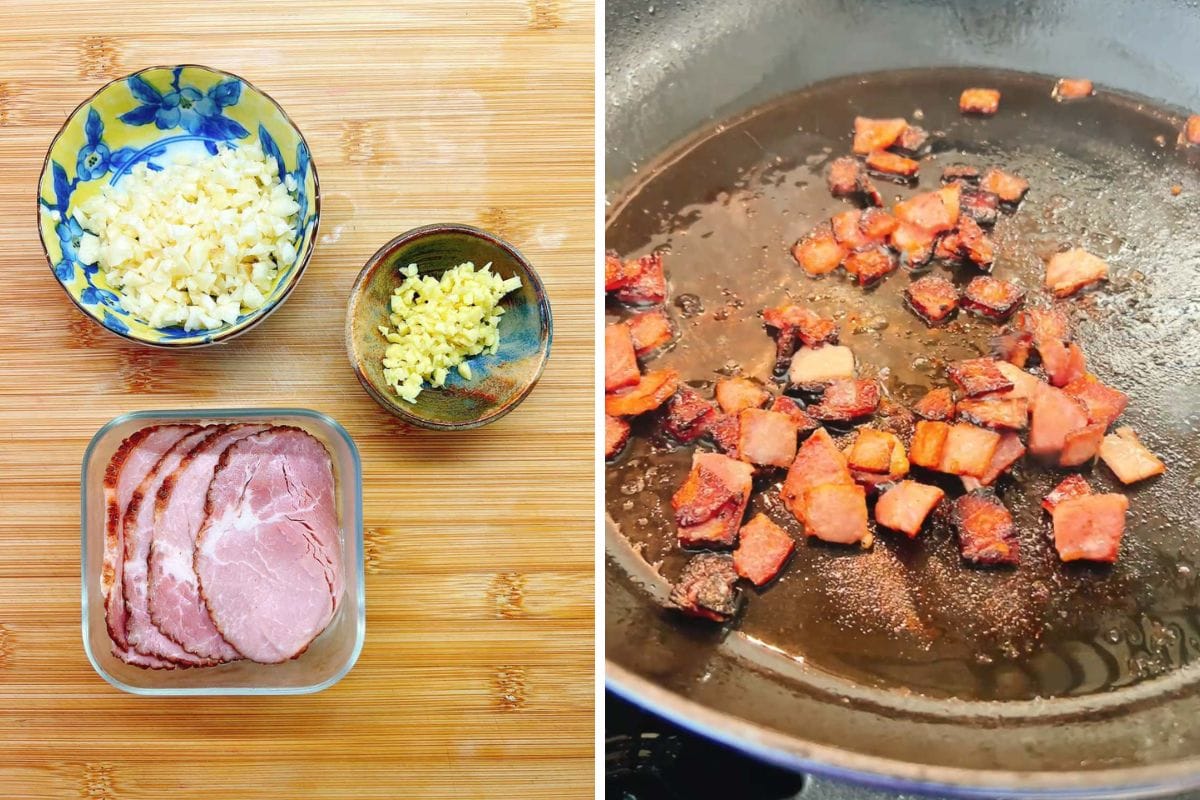
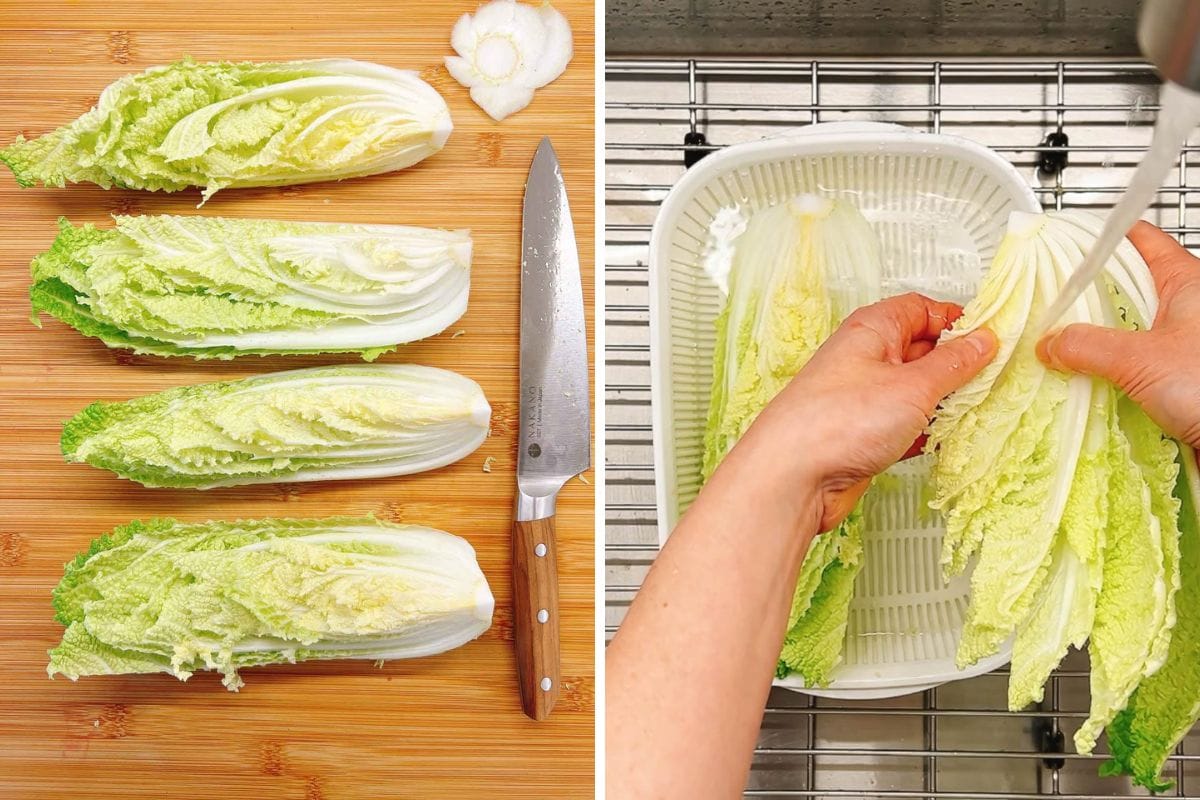
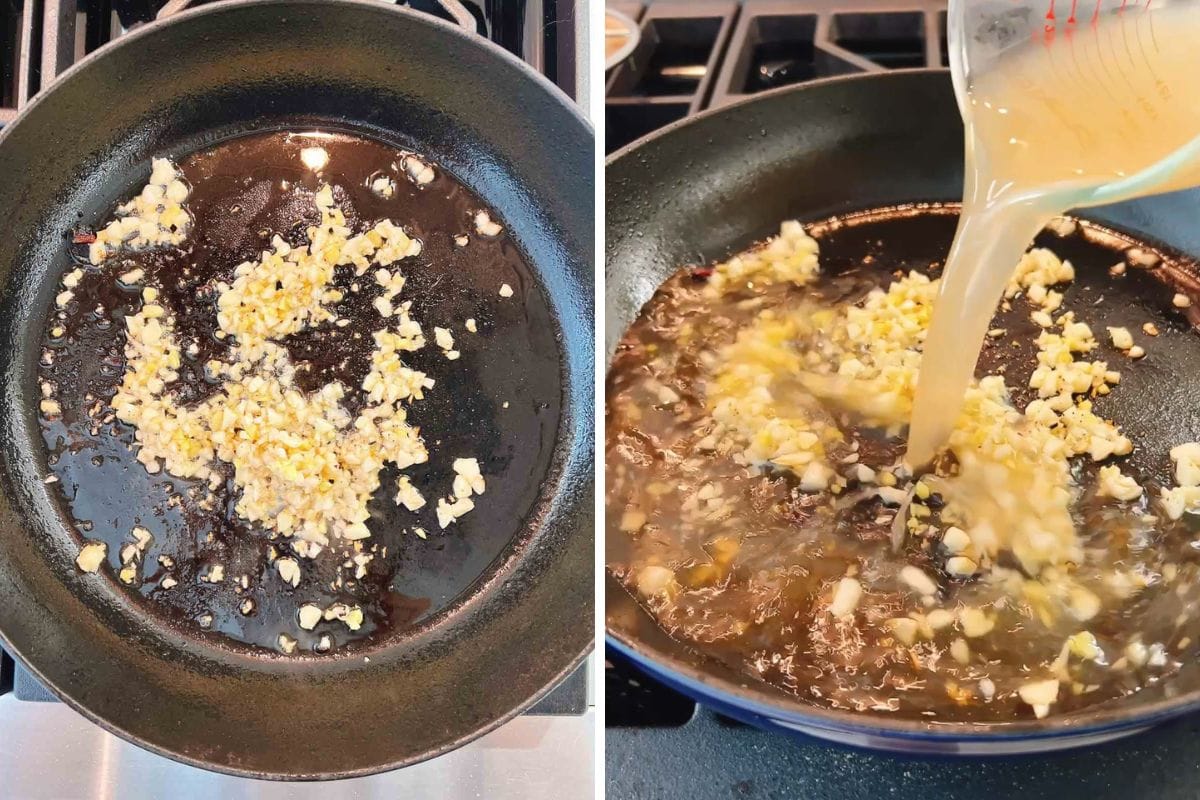
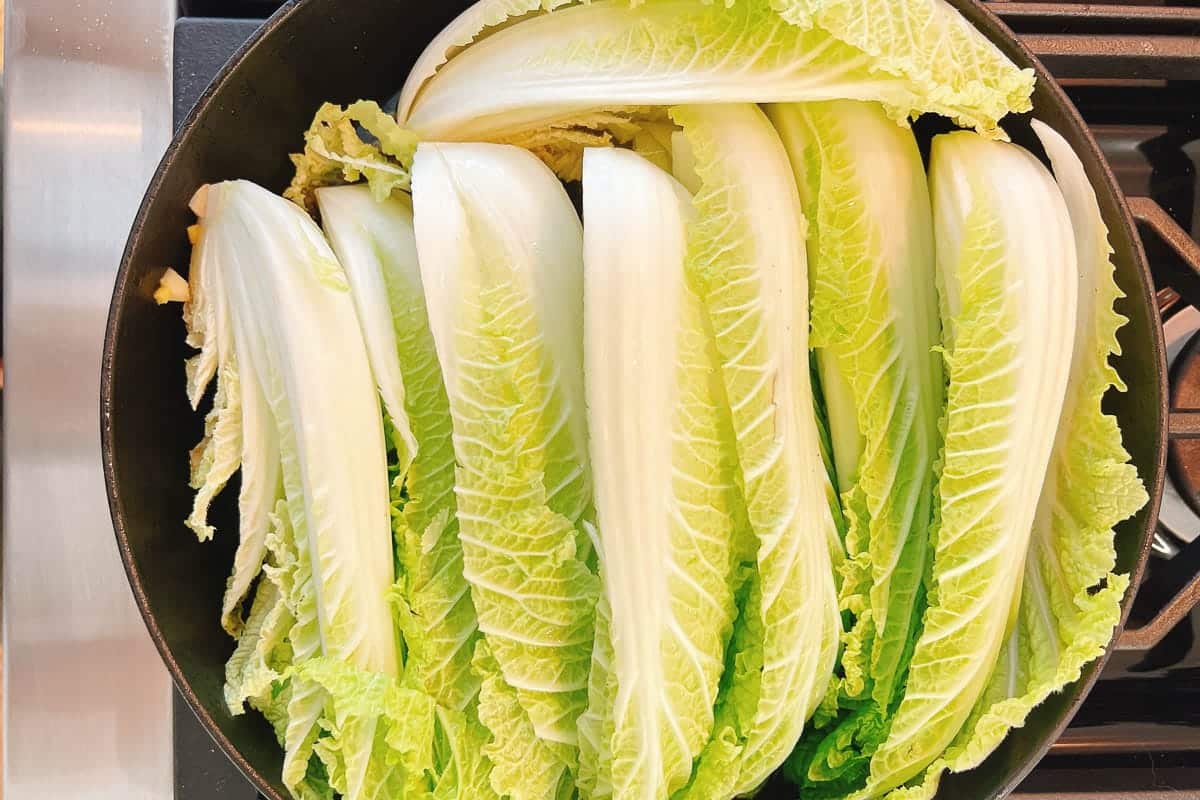
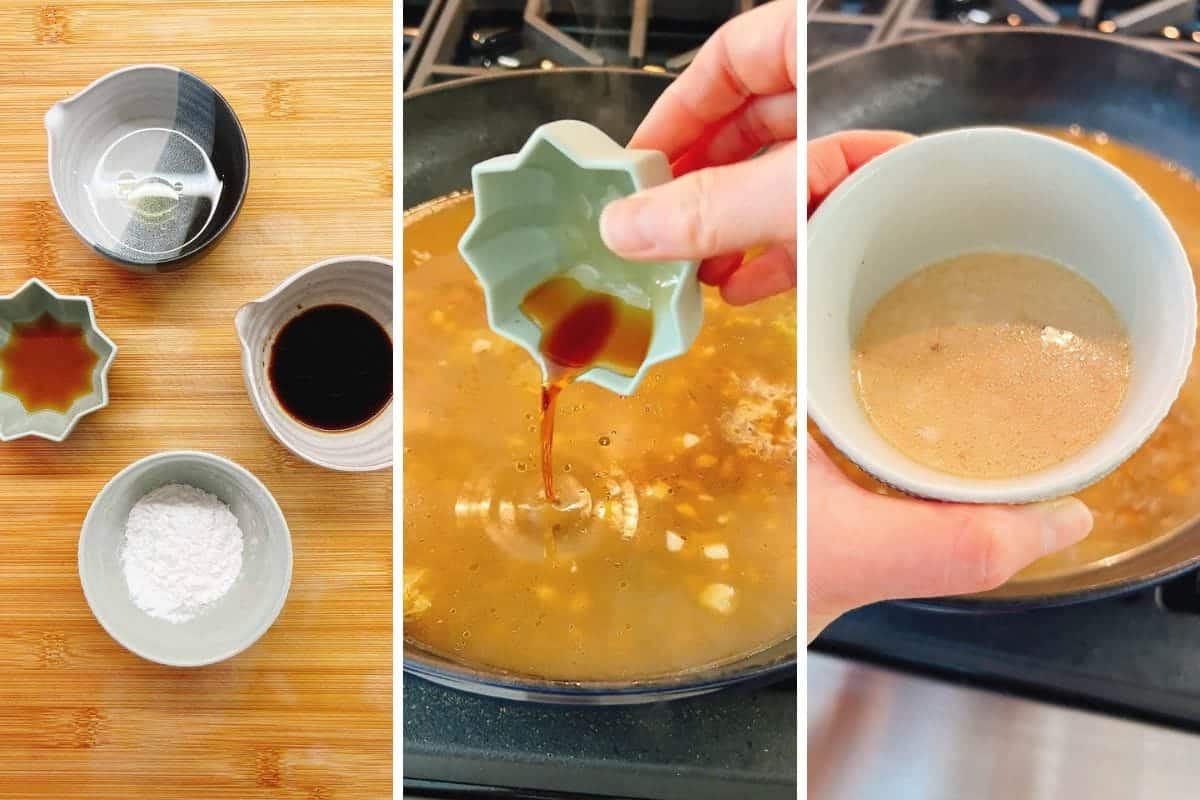
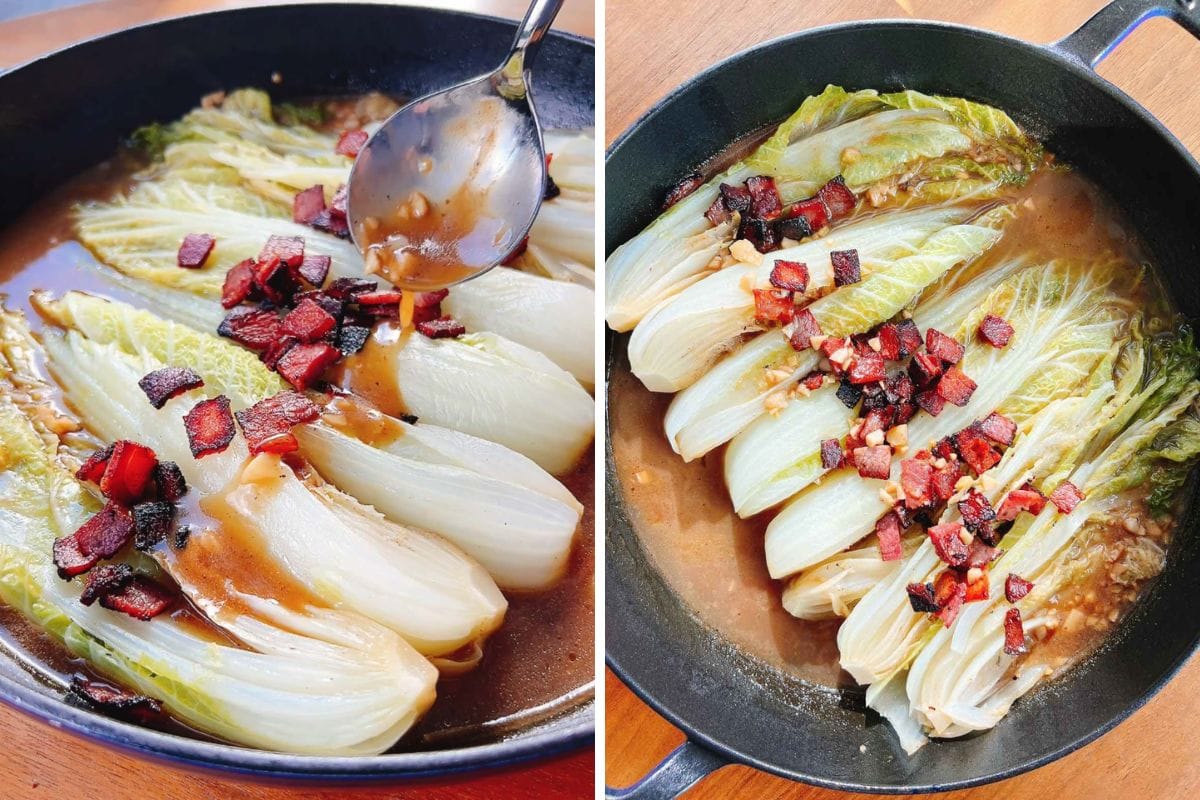
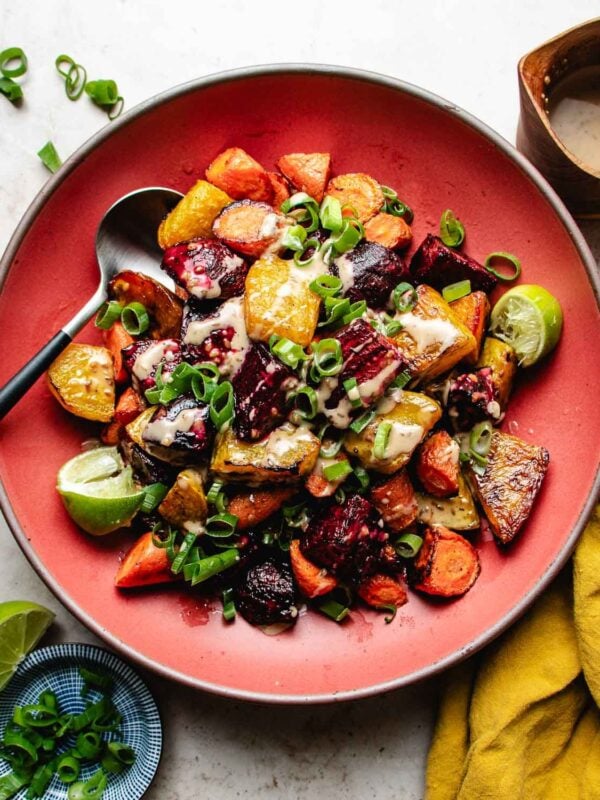
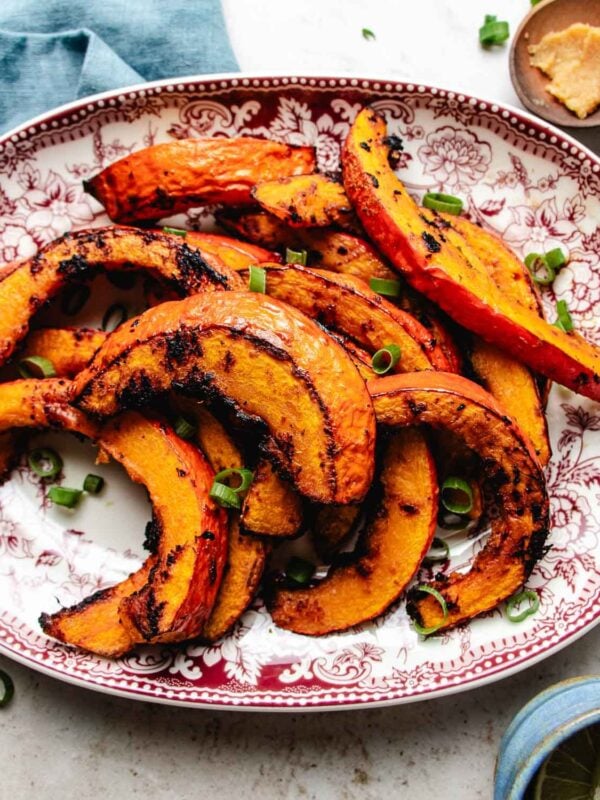
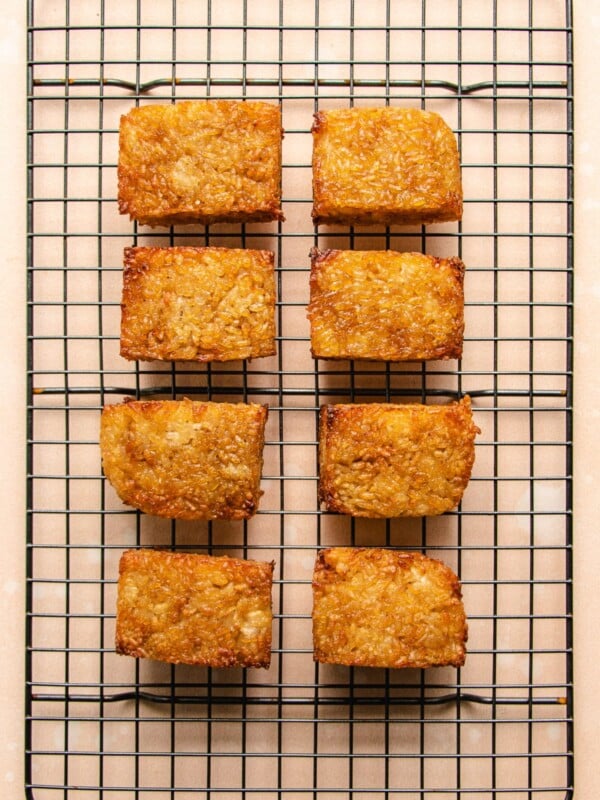
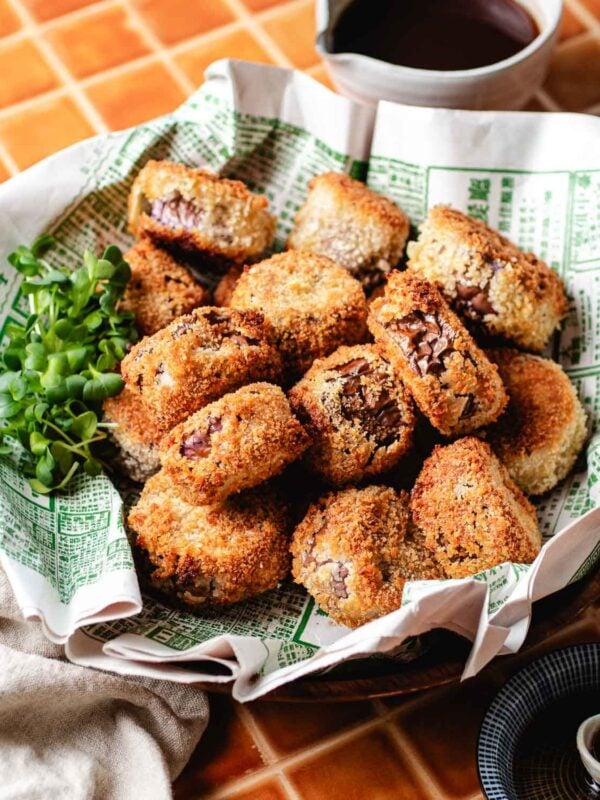
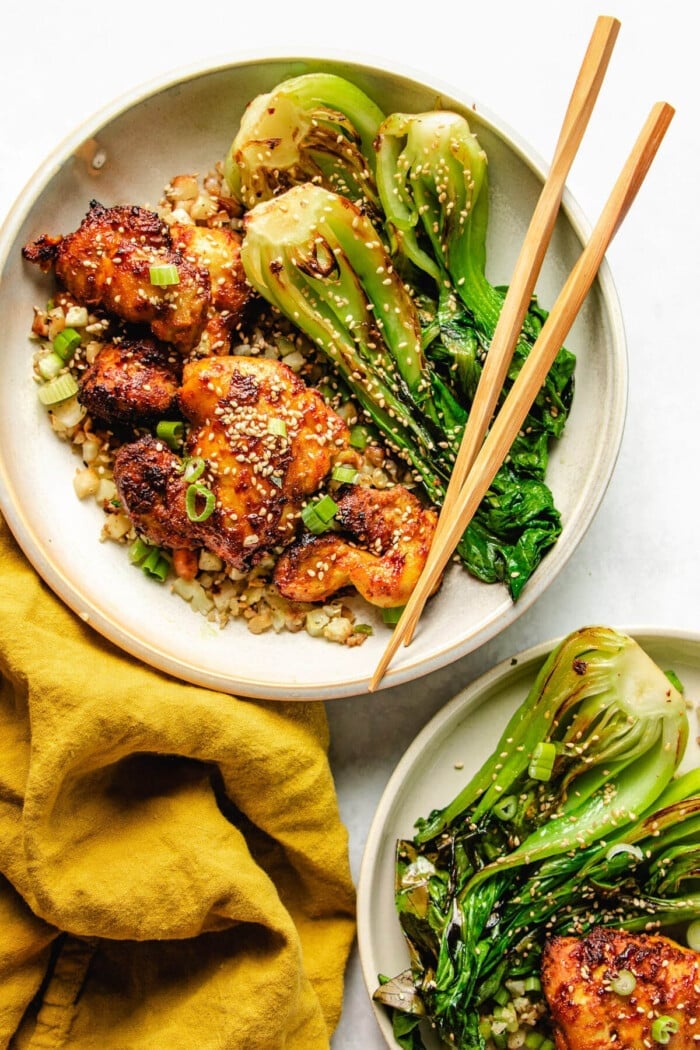








Yaas !!